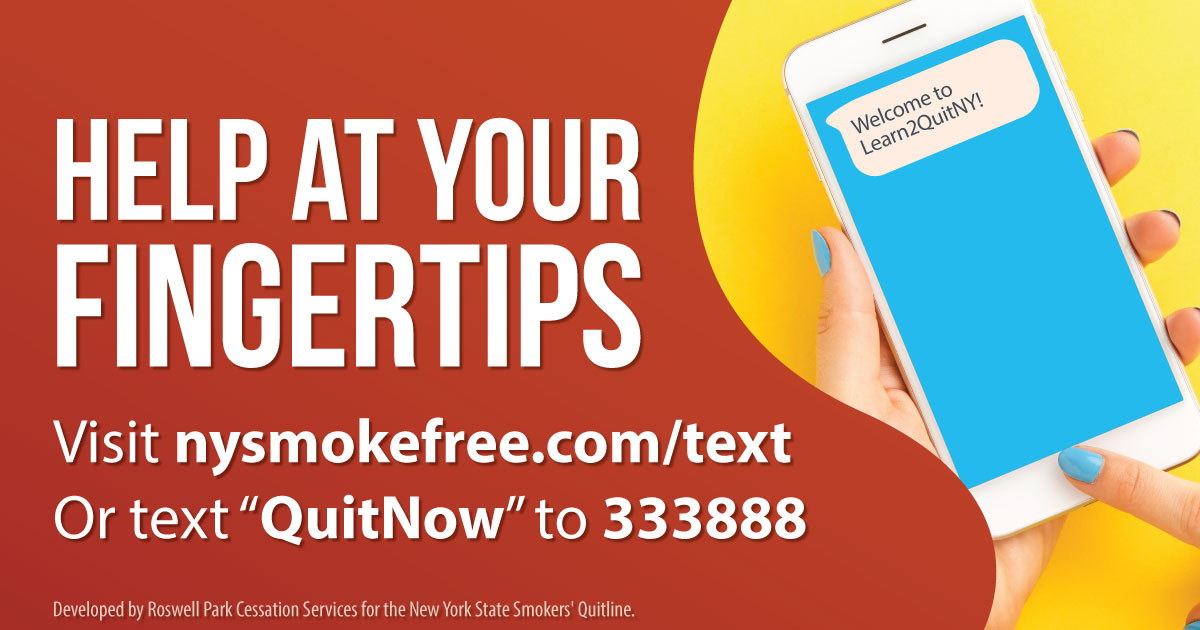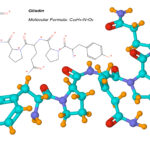By Tony Astran
If you or a loved one uses commercial tobacco* or vape products, becoming smoke-free is the very best way to achieve better health. Overcoming nicotine dependence is hard. According to the CDC, most people who smoke want to quit. Nearly 70 percent try every year to make a quit attempt; however, less than 10 percent succeed.
The New York State Smokers’ Quitline (NY Quitline), funded through the New York State Department of Health, and based at Roswell Park Comprehensive Cancer Center (Roswell Park) in Buffalo, understands it may take multiple attempts before quitting sticks for good. The key to success is using as many resources as possible to give yourself added accountability.
This is what clinicians, researchers, and IT professionals at Roswell Park kept in mind while developing Learn2QuitNY – a six-week comprehensive text messaging program, as part of a new NY Quitline offering. The free program includes three daily motivational messages that empower participants to stay focused and build skills. Learn2QuitNY also helps participants work toward weekly goals, such as setting quit date, navigating stress, and envisioning improved health.
Learn2QuitNY is effective as a standalone tool, although participants learn to access additional NY Quitline services to increase their odds for success. Trained tobacco treatment specialists provide support by phone at 1-866-NY-QUITS (1-866-697-8487) and online at nysmokefree.com. Most New York State residents ages 18 and older also qualify for a free starter supply of nicotine replacement therapy (NRT) medications, such as nicotine patches, gum, and lozenges. In combination with coaching and support, NRT medications can help people overcome physical cravings of nicotine addiction. A program like Learn2QuitNY especially focuses on tackling the challenges of making behavioral changes throughout the process of quitting.
Herman L. of Buffalo developed a better mindset through Learn2QuitNY. He had gradually decreased his cigarette intake with help from the NY Quitline, and Learn2QuitNY provided the final push to say goodbye to cigarettes for good. “The texts were very helpful,” Herman said. “I learned how smoking affects so many aspects of my health.” Herman enjoyed the convenience of extra support at his fingertips, and the engaging messages helped him to envision life as a former smoker. “Learn2QuitNY was all about encouragement and focusing on one day at a time,” Herman recalled. “It helped me feel like I wasn’t going through this process alone. The extra support made such a difference.”
Although Learn2QuitNY is most popular among Quitline participants ages 25 to 44, Herman is living proof at age 77 that text messages can be an effective and convenient way to quit smoking at any stage in life. For anyone who would like to follow in Herman’s footsteps, text QUITNOW to 333888 or visit nysmokefree.com to register for Learn2QuitNY.
*The word tobacco refers to use of manufactured, combustible commercial and vape products, not the sacred, medicinal, and traditional use of tobacco by Native American nations and other indigenous groups.
Tony Astran is the Public Information Specialist for the New York State Smokers’ Quitline












